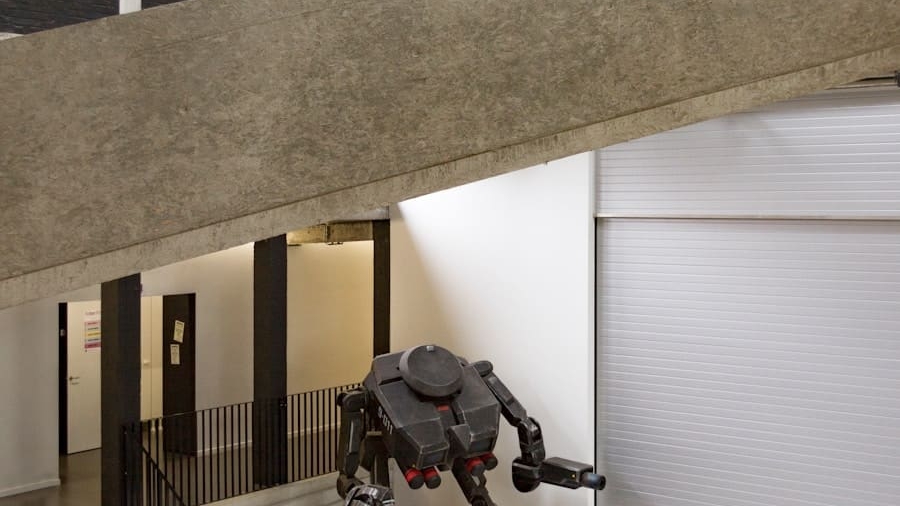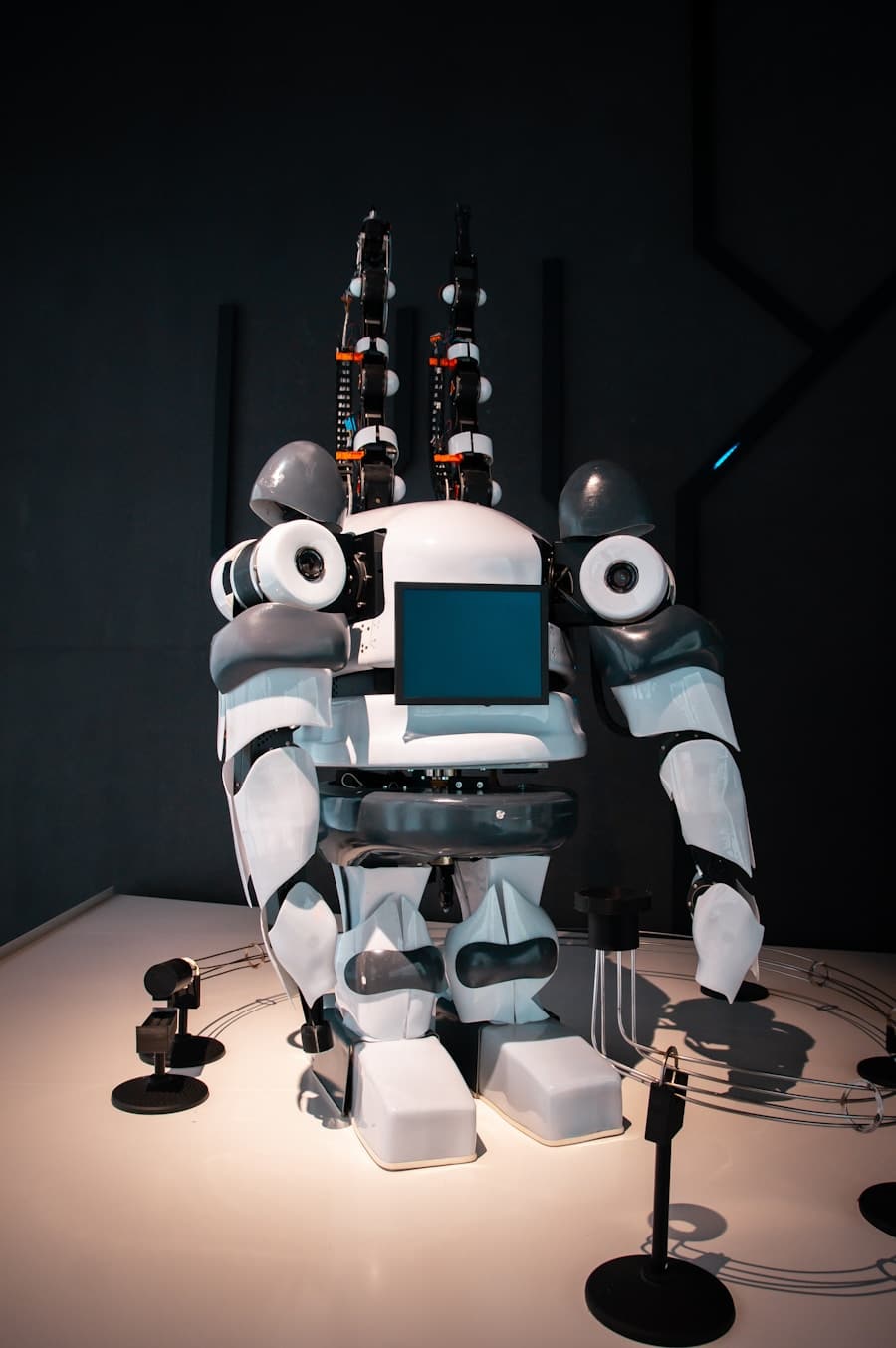The integration of robots into museums and exhibits marks a significant evolution in how cultural institutions engage with their visitors. As technology advances, museums are increasingly adopting robotic systems to enhance the visitor experience, streamline operations, and provide innovative educational opportunities. These robots serve various functions, from guiding guests through complex layouts to providing interactive displays that enrich the understanding of art and history.
The use of robotics in this context not only reflects the growing intersection of technology and culture but also highlights the potential for robots to transform traditional museum experiences into dynamic, interactive journeys. Robots in museums can take on many forms, including autonomous guides, interactive kiosks, and even robotic arms that assist in the preservation of artifacts. Their presence is not merely a novelty; it represents a strategic approach to addressing the challenges faced by modern museums, such as increasing visitor engagement and managing large crowds.
As institutions strive to remain relevant in an increasingly digital world, the incorporation of robotic technology offers a pathway to innovate and adapt, ensuring that museums continue to captivate and educate audiences of all ages.
Key Takeaways
- Robots are being increasingly used in museums and exhibits for navigation and interaction with visitors.
- Different types of robots, such as telepresence robots and autonomous robots, are used for navigation in museums and exhibits.
- Using robots for navigation in museums and exhibits can enhance visitor experience, accessibility, and safety.
- Challenges and limitations of robot navigation in museums include cost, maintenance, and potential limitations in complex environments.
- Case studies have shown successful implementation of robots in museums and exhibits, improving visitor engagement and accessibility.
Types of Robots Used for Navigation
Autonomous Mobile Robots (AMRs)
These robots are equipped with advanced sensors and navigation systems that allow them to traverse museum spaces independently.
For instance, the “Robotic Tour Guide” at the San Francisco Museum of Modern Art utilizes sophisticated algorithms to navigate through the museum while providing information about the artworks on display.
Telepresence Robots
These robots enable remote interaction, allowing users who cannot physically visit the museum to engage with exhibits in real-time. Telepresence robots are often equipped with cameras and screens, allowing a remote user to see and hear what is happening in the museum while communicating with on-site staff or other visitors.
Benefits of Robotic Technology in Museums
This technology has been particularly beneficial during times when physical access to cultural institutions is limited, such as during the COVID-19 pandemic.
Benefits of Using Robots for Museum and Exhibit Navigation
The deployment of robots in museums offers numerous benefits that enhance both operational efficiency and visitor satisfaction. One of the most significant advantages is improved accessibility.
For example, a robot can navigate through crowded spaces, ensuring that individuals with disabilities can enjoy a seamless experience without the barriers often encountered in traditional settings. Additionally, robots can enrich the educational experience by delivering personalized content based on visitor interests. By utilizing artificial intelligence and machine learning algorithms, these robots can analyze visitor behavior and preferences, offering tailored recommendations for exhibits or activities.
This level of personalization not only enhances engagement but also fosters a deeper connection between visitors and the cultural narratives presented within the museum.
Challenges and Limitations of Robot Navigation in Museums
Despite the many advantages of using robots for navigation in museums, several challenges and limitations must be addressed to ensure their effective implementation. One primary concern is the complexity of museum environments. Museums often feature intricate layouts with varying floor plans, staircases, and narrow passageways that can pose significant challenges for robotic navigation systems.
Ensuring that robots can operate effectively in such dynamic environments requires sophisticated mapping technologies and real-time data processing capabilities. Moreover, there are concerns regarding visitor interaction with robots. While many people may find robotic guides intriguing, others may feel uncomfortable or intimidated by their presence.
Striking a balance between technological innovation and human interaction is crucial; museums must ensure that robots complement rather than replace the invaluable role of human staff in providing personalized experiences. Additionally, there are technical limitations related to battery life, maintenance requirements, and software updates that can impact the reliability and longevity of robotic systems.
Case Studies of Successful Implementation of Robots in Museums and Exhibits
Several museums around the world have successfully integrated robots into their operations, showcasing innovative applications that enhance visitor experiences. The Smithsonian National Museum of Natural History in Washington, D.C., introduced a robot named “Mimi” designed to assist visitors in navigating the museum’s vast collection. Mimi interacts with guests by answering questions about exhibits and providing directions, significantly improving visitor engagement and satisfaction.
Another notable example is the “Robot Tour Guide” at the National Museum of Singapore. This robot not only guides visitors through various exhibits but also engages them with interactive storytelling elements that bring historical narratives to life. By combining robotics with immersive storytelling techniques, the museum has created a unique experience that resonates with both local and international audiences.
Future Trends and Innovations in Robot-Assisted Museum Navigation
As technology continues to evolve, the future of robot-assisted navigation in museums holds exciting possibilities. One emerging trend is the integration of augmented reality (AR) with robotic systems. By combining AR technology with mobile robots, museums can create immersive experiences where visitors interact with digital overlays that enhance their understanding of exhibits.
For instance, a visitor could use an AR headset while following a robot guide, allowing them to see additional information or visualizations related to the artifacts on display. Furthermore, advancements in artificial intelligence will likely lead to more sophisticated robots capable of understanding natural language and responding to complex queries from visitors. This could transform how guests interact with robotic guides, making conversations more fluid and engaging.
Additionally, as machine learning algorithms improve, robots will become better at predicting visitor preferences and adapting their tours accordingly, creating a more personalized experience.
Ethical Considerations of Using Robots in Cultural Institutions
The implementation of robots in cultural institutions raises several ethical considerations that must be carefully navigated. One significant concern is data privacy; as robots collect information about visitor behavior and preferences, museums must ensure that this data is handled responsibly and transparently. Establishing clear policies regarding data collection, storage, and usage is essential to maintain visitor trust.
Moreover, there is an ongoing debate about the role of technology in preserving cultural heritage. While robots can assist in conservation efforts by monitoring environmental conditions or handling delicate artifacts, there is a risk that over-reliance on technology may diminish the human element essential to cultural institutions. Museums must strike a balance between leveraging technological advancements and preserving the authenticity of human experiences that define cultural engagement.
The Impact of Robots on the Visitor Experience in Museums and Exhibits
The integration of robots into museums and exhibits has fundamentally altered how visitors engage with cultural institutions. By enhancing accessibility, personalizing experiences, and providing innovative educational opportunities, robots have become valuable assets in enriching the visitor journey. However, as museums continue to explore this technological frontier, they must remain vigilant about addressing challenges related to navigation complexity, visitor comfort, and ethical considerations.
As we look toward the future, it is clear that robots will play an increasingly prominent role in shaping museum experiences. With ongoing advancements in artificial intelligence, augmented reality, and robotics technology, cultural institutions have the potential to create even more immersive and engaging environments for their audiences. Ultimately, the successful integration of robots into museums will depend on a thoughtful approach that prioritizes both technological innovation and the preservation of meaningful human connections within these cherished spaces.
If you are interested in the technology behind museum exhibits, you may also want to check out this article on the best lighting design software of 2023. This software plays a crucial role in creating immersive and engaging experiences for visitors by enhancing the visual appeal of exhibits. Just like how robots are revolutionizing museum navigation, lighting design software is also pushing the boundaries of creativity and innovation in the museum industry.
FAQs
What are the benefits of using robots for museum and exhibit navigation?
Robots can provide a unique and interactive way for visitors to navigate through museums and exhibits, offering a more engaging and informative experience. They can also help to reduce congestion and improve the flow of foot traffic within the space.
How do robots assist visitors in navigating through museums and exhibits?
Robots can be programmed to provide guided tours, offer information about specific exhibits, and even answer visitor questions. They can also help visitors locate specific artworks or artifacts within the museum.
What types of robots are commonly used for museum and exhibit navigation?
Common types of robots used for museum and exhibit navigation include autonomous mobile robots, telepresence robots, and interactive humanoid robots. These robots are designed to interact with visitors and provide them with a personalized experience.
Are there any limitations to using robots for museum and exhibit navigation?
While robots can enhance the visitor experience, they may have limitations in terms of their ability to navigate complex environments or interact with visitors in a natural and intuitive manner. Additionally, there may be concerns about the impact of robots on the overall atmosphere and ambiance of the museum or exhibit space.
How are robots programmed to navigate through museum and exhibit spaces?
Robots are typically programmed using a combination of mapping and localization techniques, as well as sensors and cameras to detect and avoid obstacles. They may also be equipped with natural language processing capabilities to interact with visitors.



